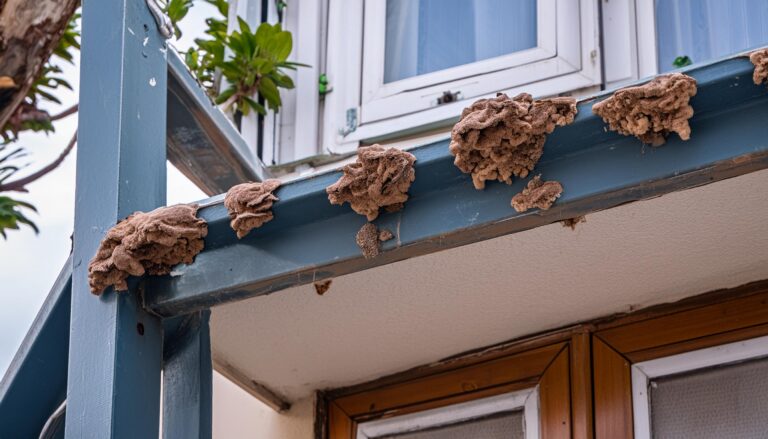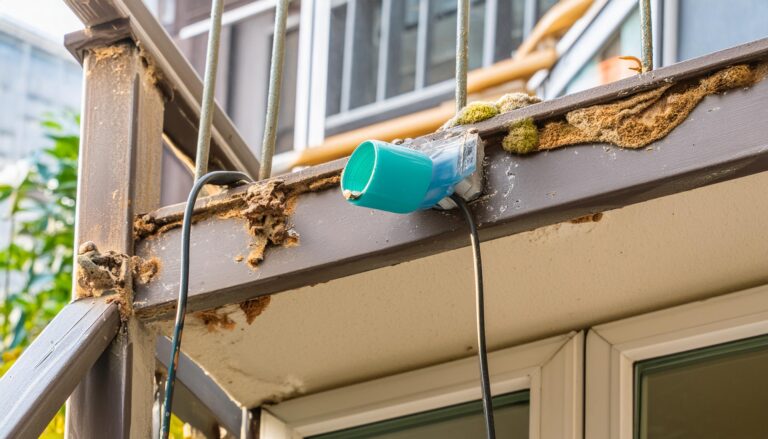6 Essential Steps to Protect Your California Balcony from Dry Rot

Table of Contents
What is Dry Rot? The Silent Threat to Your California Balcony
6 Essential Steps to Protect Your California Balcony from Dry Rot
When to Call in the Professionals?
FAQ Section: Top Questions & Answers
So, you’ve heard the horror stories about wood rot, right? It’s that silent menace that can turn your beautiful California balcony into a crumbling safety hazard. But fear not! There are steps you can take to prevent this nasty problem before it wreaks havoc on your property.
What is Dry Rot? The Silent Threat to Your California Balcony
Don’t let the name fool you: dry rot is anything but dry. It’s a nasty type of fungus (Serpula lacrymans, for those of you who like the science-y names) that thrives on moisture and feasts on wood. And guess what? California balconies, especially those exposed to our coastal climates or those with older wood framing, are a prime target for this silent menace.
Why is Dry Rot a Big Deal?
Dry rot often starts inside the wood, where it’s invisible to the untrained eye. It can spread rapidly, weakening the structural integrity of your balcony before you even notice visible signs of damage. Rotted wood is a major red flag during balcony inspections, and failure to address it could result in hefty fines for non-compliance with SB-326 and SB-721.
Once dry rot takes hold, repairs can be extensive and expensive. Catching it early, through regular maintenance and professional balcony inspections, is the most cost-effective solution. If a balcony fails due to untreated dry rot, the property owner could face significant legal liability for any injuries or damages that occur.
Contact DrBalcony for a professional inspection!
Ensure the safety of your balcony and living space with DrBalcony – We’re a Tech Engineering firm that specializes in California SB326 & SB721 balcony inspections. Over 300+ completed projects in California.
Request A Free EstimateClick To Call
How Dry Rot Sneaks In?
Moisture is the key ingredient for dry rot. Here’s how it often invades your balcony:
- Leaking Pipes or Gutters: Water dripping onto or near the balcony creates a damp environment perfect for fungal growth.
- Poor Drainage: If water doesn’t drain properly off the balcony, it can seep into the wood, especially at joints and connections.
- Cracks and Gaps: Even small cracks or gaps in the wood or sealant can allow moisture to penetrate, setting the stage for dry rot.
- Condensation: In humid environments, condensation can form on the underside of the balcony, providing a breeding ground for fungus.
By understanding how dry rot works and taking proactive steps to prevent it, you can safeguard your California balcony and ensure a safe, enjoyable outdoor space for years to come.

6 Essential Steps to Protect Your California Balcony from Dry Rot
Don’t wait for a failed SB-326 or SB721 balcony inspection to address dry rot – prevention is key to keeping your balconies safe, compliant, and beautiful for years to come. Follow these steps to make dry rot think twice about messing with your California property:
- Regular Balcony Inspections: Don’t Skip Them!
California’s balcony inspection laws exist for a reason. Even if you’re diligent about maintenance, a professional inspection every few years can spot subtle signs of trouble before they escalate. Think of it as a check-up for your balcony’s health! - Seal Those Cracks and Gaps: Think Like Water
Water is sneaky! It can penetrate the tiniest openings, so inspect your balcony carefully. Seal any cracks or gaps in the wood, paying special attention to areas where the balcony connects to the building. Use high-quality, exterior-grade caulk or sealant for best results. - Keep It Clean, Keep It Dry:
- Sweep away debris like leaves and dirt that can trap moisture.
- Make sure potted plants aren’t overflowing onto the balcony surface or causing persistent dampness.
- If you notice any standing water after rain, remove it promptly to prevent prolonged exposure to moisture.
- Maintain Your Gutters and Drainage:
Clogged gutters and downspouts can direct water onto your balcony, creating a breeding ground for dry rot. Ensure proper drainage away from your balcony’s foundation. - Ventilation is Key:
Good airflow helps keep your balcony dry. If your balcony is partially or fully enclosed, consider adding vents or fans to promote air circulation. - Consider Protective Coatings:
A weather-resistant stain or sealant can provide an extra layer of protection for your wood balcony. Be sure to choose products suitable for outdoor use and your specific type of wood.
DrBalcony Pro Tip
Even with diligent maintenance, routine SB326 and SB721 balcony inspections are crucial for identifying any hidden issues early on. A professional inspector can catch problems that aren’t visible to the untrained eye, such as moisture trapped inside wood or early signs of insect damage.
Contact DrBalcony for a professional inspection!
Ensure the safety of your balcony and living space with DrBalcony – We’re a Tech Engineering firm that specializes in California SB326 & SB721 balcony inspections. Over 300+ completed projects in California.
Request A Free EstimateClick To Call
When to Call in the Professionals?
It’s tempting to DIY minor repairs around the house, but when it comes to your California balcony, knowing when to call a professional can save you time, money, and a whole lot of stress. Here’s how to decide if your balcony situation warrants expert attention:
- You’ve got signs of damage: If your DIY checks reveal any of the following, it’s time to consult an expert:
- Soft, spongy, or crumbling wood
- Significant cracks in the wood or concrete
- Rusted or corroded metal elements
- Visible signs of mold or insect damage
- Loose railings or other instability
- You’re not sure what you’re seeing: Some issues might seem minor, but could indicate a larger structural problem. A professional can assess the situation and determine if it requires immediate attention.
- The inspection report says “Repair Required”: If your SB-326 or SB-721 balcony inspection report identifies required repairs, it’s crucial to have them performed by a qualified contractor. This ensures the work is done correctly and meets California’s stringent safety regulations.
- Your balcony is over 6 feet high: Even if you’re a DIY enthusiast, working at heights can be dangerous. A professional has the equipment and experience to safely access and repair elevated areas.
- You want peace of mind: Balcony safety isn’t something to take lightly. Partnering with a professional ensures your repairs are done correctly, your balcony is compliant with California balcony inspection laws, and you can enjoy your outdoor space with confidence.
Our team of balcony experts specializes in identifying and addressing a wide range of issues, from minor repairs to major structural problems. We understand the intricacies of SB 326 and SB 721, ensuring your balcony is safe, compliant, and beautiful for years to come.
FAQ Section: Top Questions & Answers
My property is well-maintained. Do I really need SB-326/SB-721 inspections?
YES! Even with excellent maintenance, hidden issues can develop due to construction errors, material flaws, or severe weather exposure. Inspections are about ensuring those don’t turn into major problems.
Our balconies were inspected a few years ago – isn’t that enough?
Unfortunately, no. California laws mandate inspections on a set schedule, often every 6 years. Deterioration can happen quickly, making regular assessments essential.
Can I use my regular handyman for the balcony inspection?
It’s not recommended. Unless they hold specific licenses (architect, structural engineer, etc.) their inspection won’t be considered valid for SB-326/SB-721 compliance.
What if the inspection uncovers major issues?
First, don’t panic! Early detection often means less extensive (and expensive) repairs are needed. Work with your inspector to prioritize fixes, and explore if they offer repair services for a streamlined solution.
I’m worried about the cost of inspections. Are there any resources to help?
Start by getting detailed quotes from multiple companies. Factor in that proactive inspections help you avoid even bigger costs down the line due to neglected problems. Some property management associations offer guidance on budgeting for balcony compliance.
